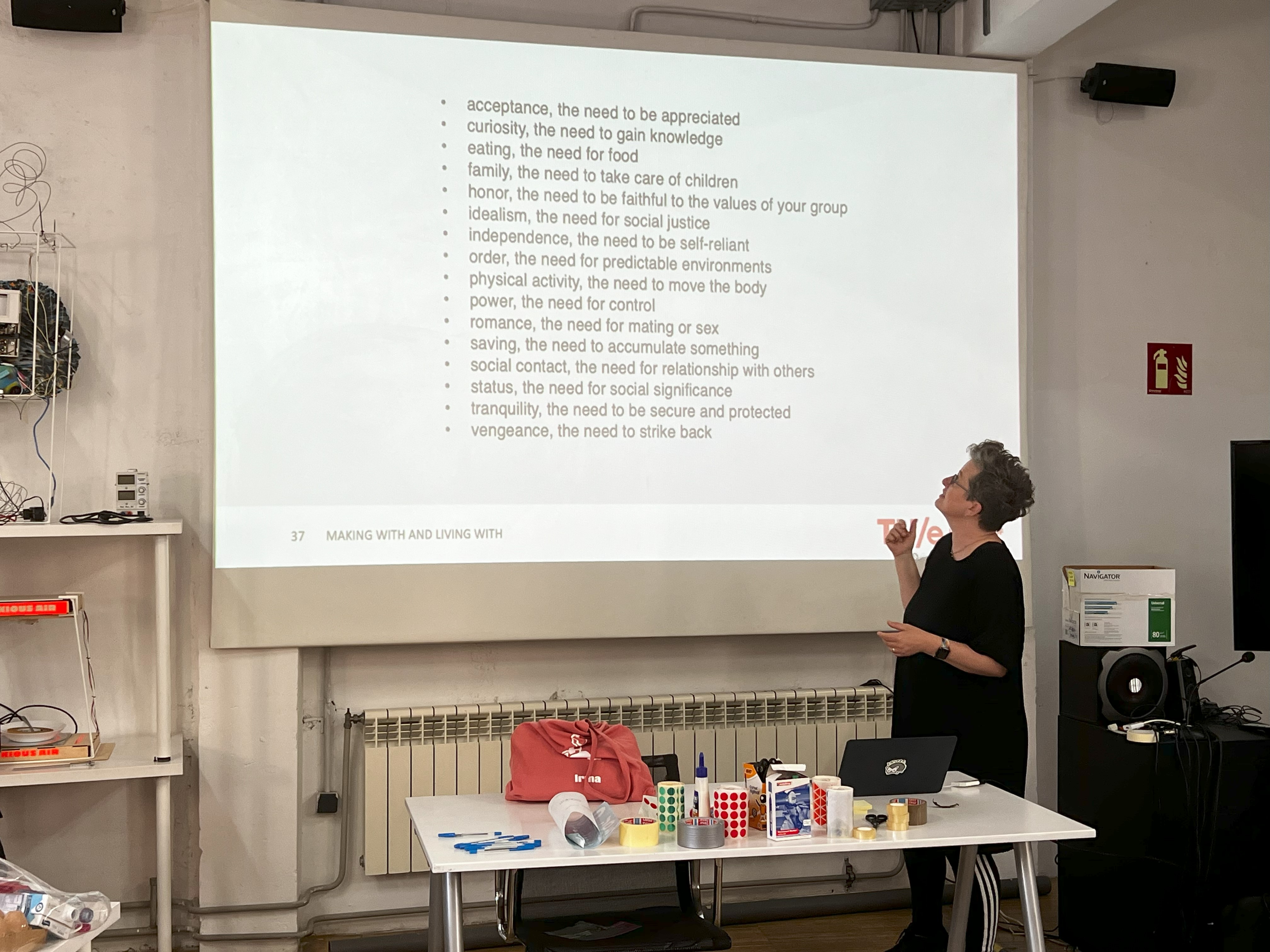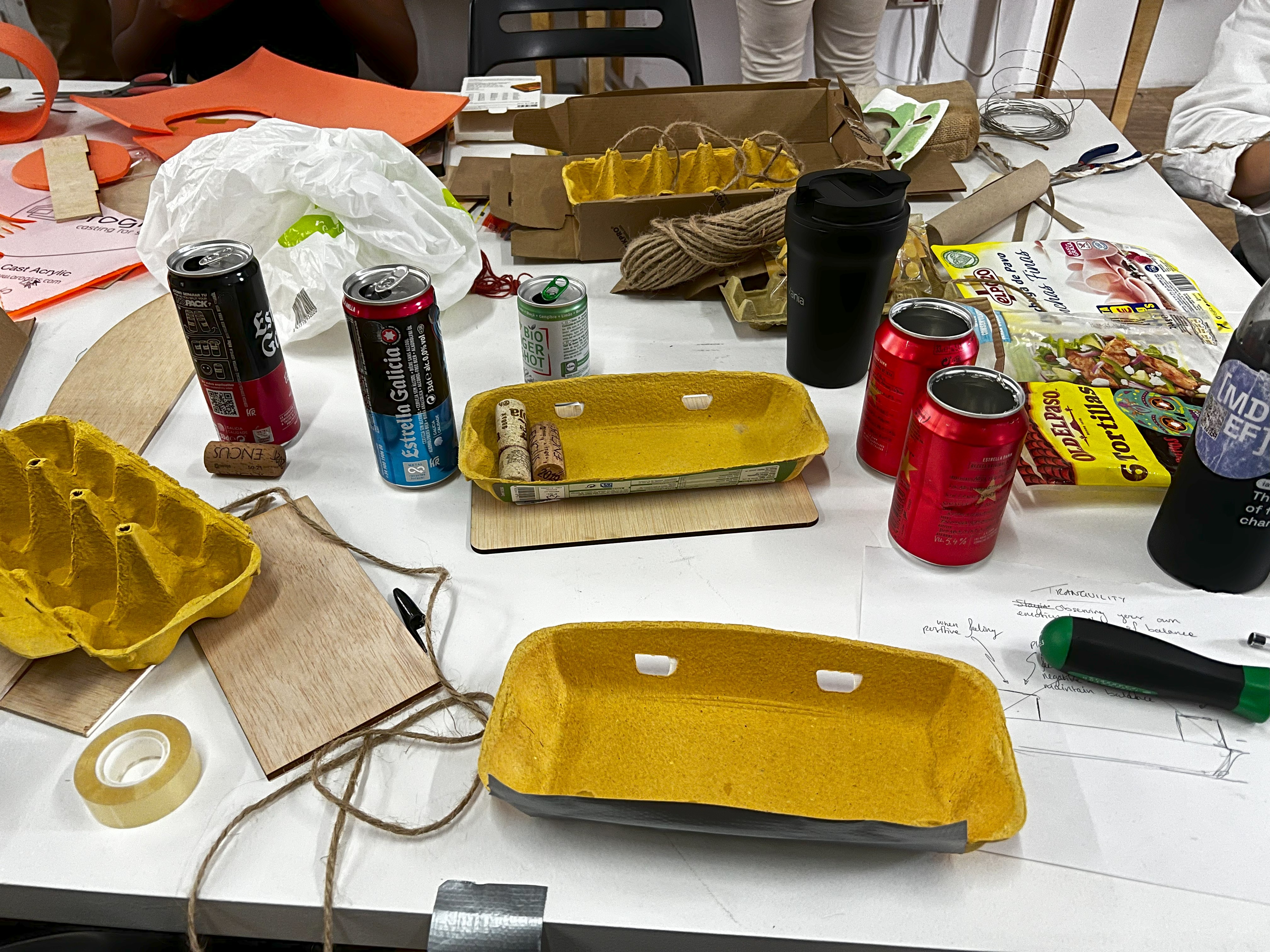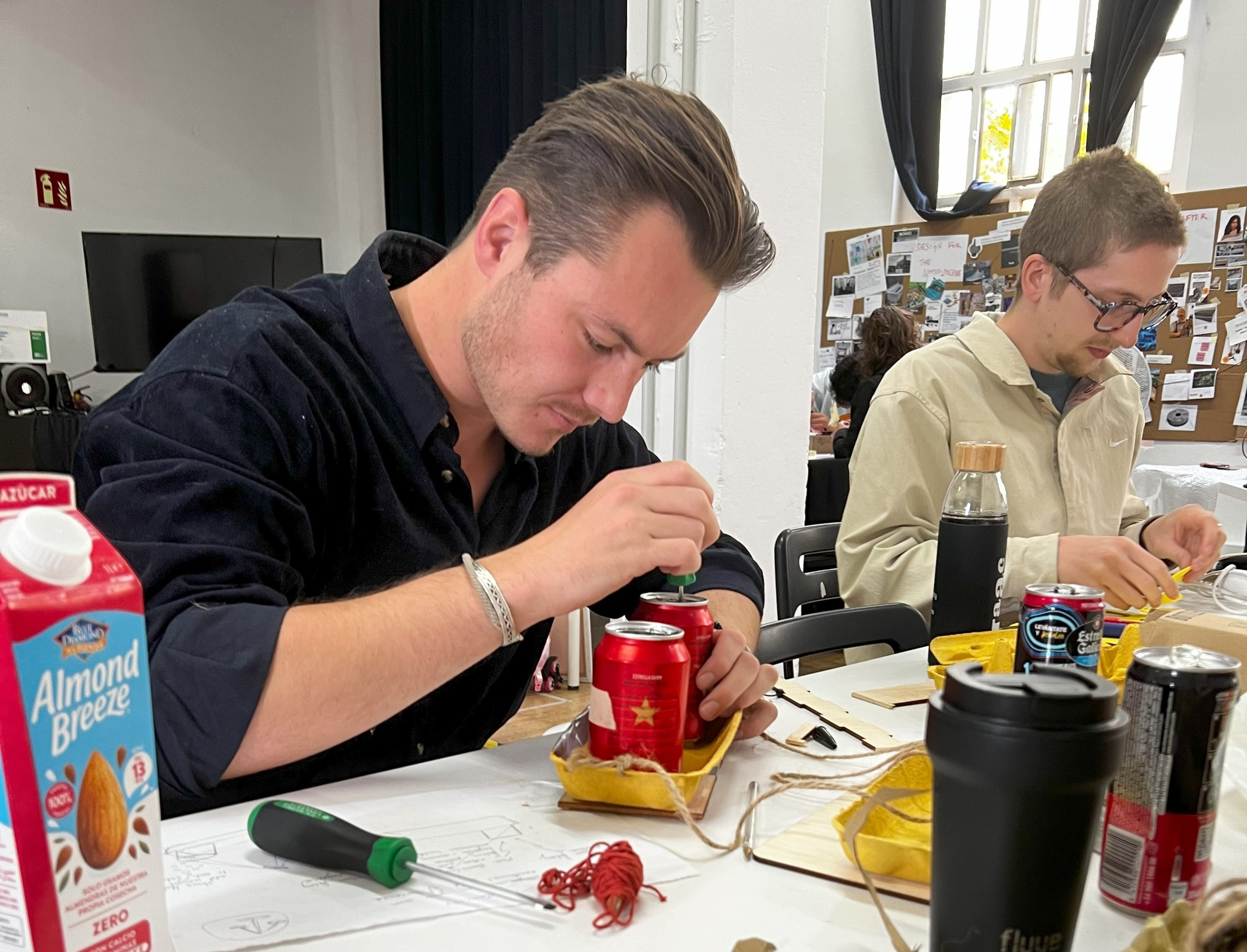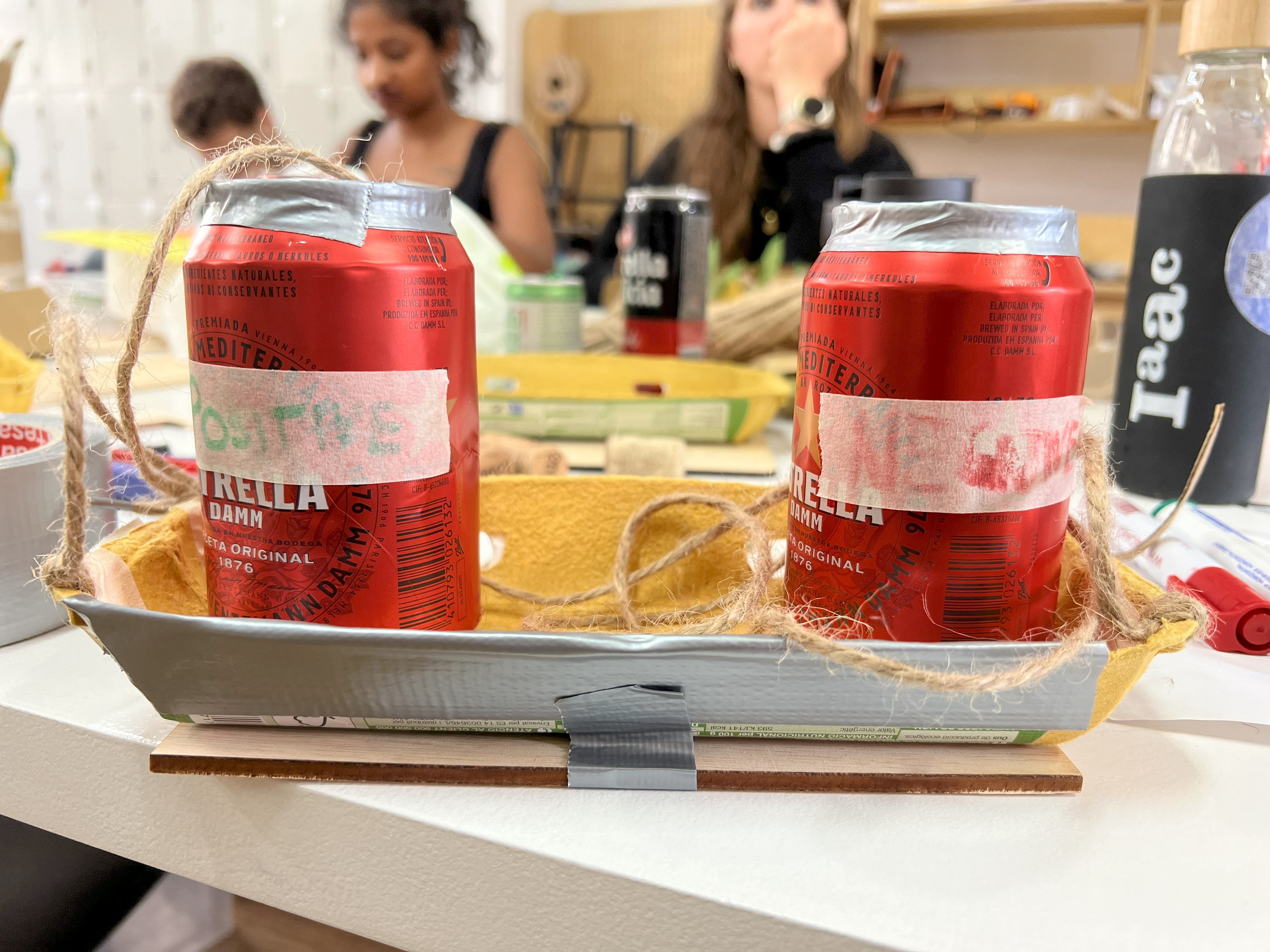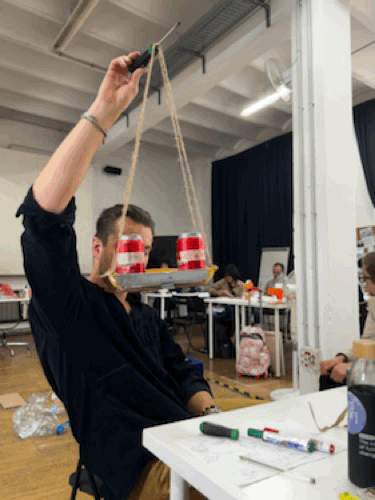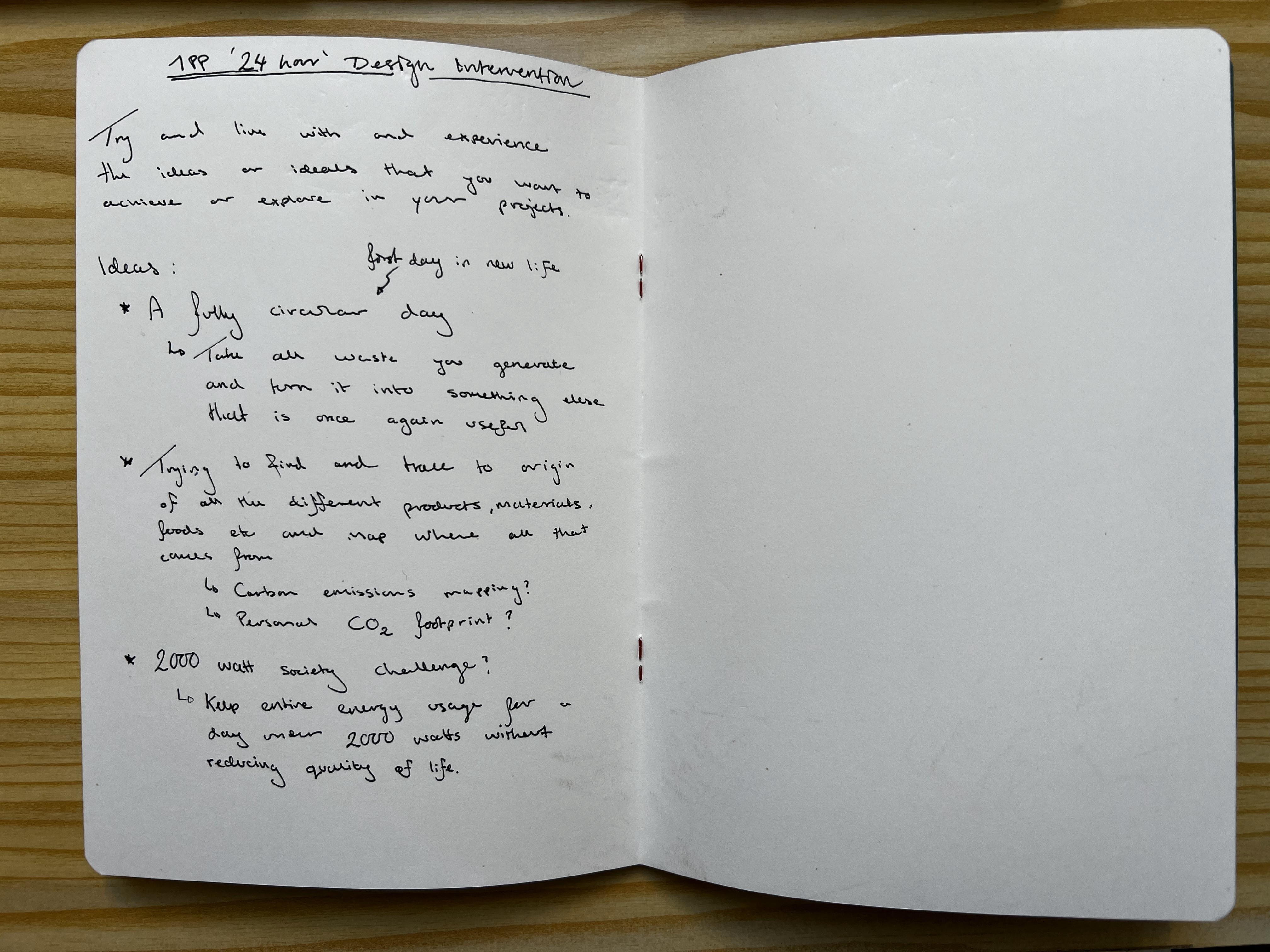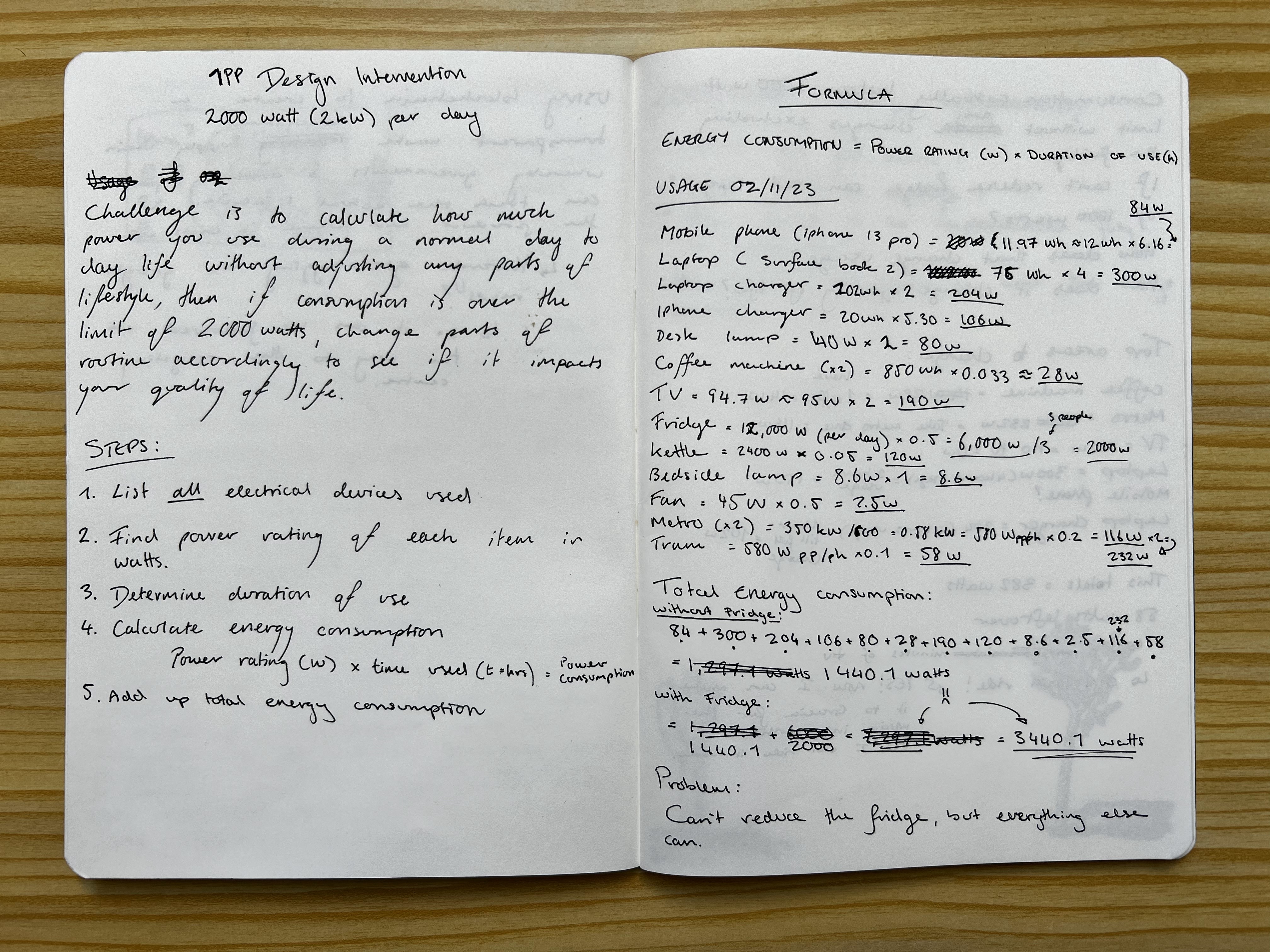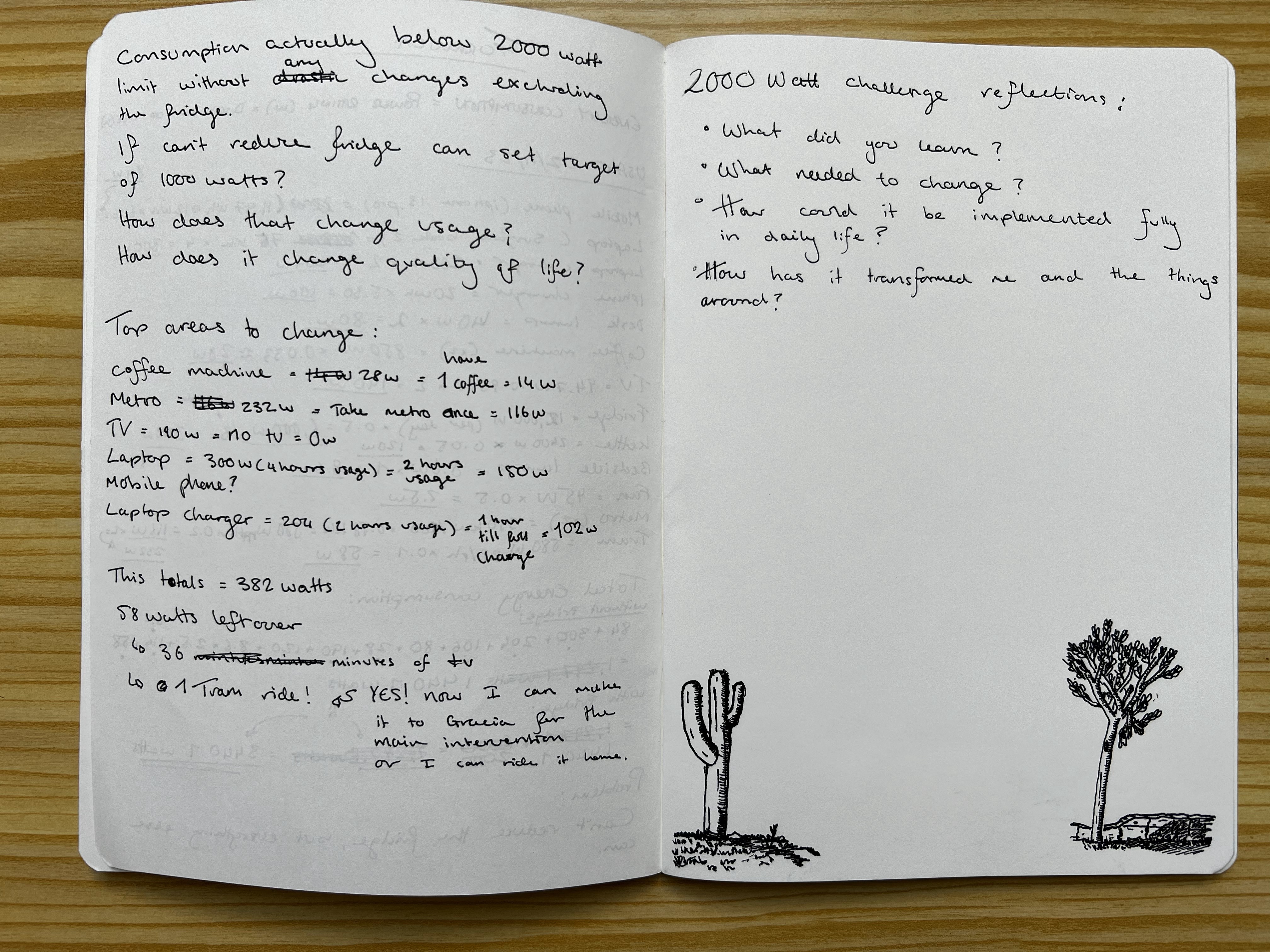Living with your own ideas
Too Long Didn’t Read
Over the course of four days, we engaged in two workshops focused on “boots on the ground” testing and executing our ideas. In the first workshop, “Magic Machines,” we used lo-fi prototyping to create machines based on the 16 basic human desires. I made a set of scales to represent emotional balance. In the second workshop, we embraced the first-person perspective methodology by conducting a 24-hour challenge to live sustainably under the 2000-watt society concept. This hands-on approach provided invaluable insights into sustainable living and energy consumption, highlighting areas for further research and design exploration.
This past week we completed our module “Living with your own ideas” taught by Oscar Tomico, Kristina Andersen and Angella Mackey. Over the course of 4 days we had took part in two different workshops, designed to show us what it means to be an active participant with a “boots on the ground” approach to the testing and executing of our own ideas and theories, rather than just hypothesis from an outside perspective.
Magic Machines¶
what you had to do
The first of our workshops, “Making magic machines” taught by Kristina Andersen was about designing for an imagined person (in this case, ourselves) we were asked to bring any sort of “waste” materials we had at home for some Lo-Fi prototyping, as we were going to building a physical manifestation of whatever idea we were going to come up with. Acting as an exercise in building for an unknown objective. We were presented with a list the 16 basic human desires (as determined by researchers from the dark arts of motivational psychology — about which you can read more here) from which we were to pick one that either we resonated with or disagreed with, and then build a machine that would work towards or against that desire. These machines didn’t have to necessarily work (as all we had with us were rough recycled materials) but were more there to represent an idea — hence the term magic machines.
These machines were then going to become companions in our lives for the rest of the week, to see for ourselves how we would interact with them on a day to day basis, and whether or not they succeeded in making us feel the way we wanted them too.
Emotional Balance
Out of the 16 basic human desires, I chose Tranquillity. Something that resonated quite deeply with me and was something that I wanted to explore a bit further — how can I create something that either represents or enhances tranquillity in my own day to day life?
With that in mind, I ended up with making a simple set of scales (albeit not very good ones now in hindsight) out of two aluminium cans, some scrap wood, the bottom of an egg carton and some twine. One side representing positive emotions and the other negative ones.
As you went about your day you would place a marble in either the positive or negative can and over time you’d be able to notice if an imbalance in your emotional state was starting to take place, with a visual reminder acting as soft cue to try and restore some balance by encouraging you to stop and reflect for a moment.
Why?
when trying to come up with my machine, I ended up thinking about how much of what is happening in the world can feel very negative, throwing us off balance and being immersed in so many negative emotions (whether we notice them or not) can make life a very difficult place to be, and sometimes a visual reminder to find your equilibrium is just what’s needed.
Because It’s easy to slip into extremes when that’s all that you see around you, and having a visual indicator of the emotions surrounding you can be a reminder to go and do something that makes you genuinely happy and brings you some joy (whatever that may be) can help you bring some balance back to your life. At least, for the week it lived with me it definitely helped! :D
1PP research - Embodying your ideas¶
Areas of exploration
Later in the week our second workshop took place, this one led by Oscar Tomico and Angela Mackey dived deeper into the first person perspective methodology when it comes to design research.
As a quick reminder, First person perspective or 1PP is a methodology in which you as the designer try to immerse yourself fully into the area you are designing for, trying to experience for yourself the problems you are trying to solve to try and truly understand them and acknowledging your own biases, perspectives and limitations when creating a solution.
For this workshop, we had to identify an area of interest we had that might be able to form the basis for a final project later, or at least further research and insight into a particular topic that related to our design spaces. From there we had to commit to a 24 hour challenge of living within that idea and document our experience on it.
I’m really interested in designing for a sustainable future guided by long termism and regenerative and circular design principles. I’d come across the concept of the 2000 watt society, which is an idea posed by some researchers in Zurich that suggests limiting the average individual energy consumption to 2000 watts to achieve a sustainable society, while ensuring that there is no perceived loss in quality of life through an emphasis on energy efficiency, renewable energy sources, and lifestyle changes to reduce overall energy consumption. You can read more about that here.
This seemed like a really interesting idea, so I wanted to explore how I could live those changes in my own life and note down what problems (if any) that I encountered.
How and Why
I decided to split my 24 hours into two halves, the first 12 hours I would change nothing, and simply note down everything that I used that consumed electricity, how long I used it for and using a simple formula, calculate how much power I’d consumed using each machine. After adding it all up together, see if I was over the usage limit and then adjust my habits for the next 12 hours to see if I could stay under the limit and see how it affected me.
The formula: Energy Consumption (Wh)=(∑Power Rating of Device (W)×Duration of Use (h))
It turned out that on that particular day when I summed everything up (probably not everything I used but a close guestimate) I was over the limit by 1440 watts as my fridge ate up all the power allocation for the day immediately at 2000 watts of power just on its own over the course of a day of using it, but without it I was actually actually under the 2000 watt usage limit, coming in at a solid 1440 watts! So, knowing full well that for this experiment I couldn’t just “use the fridge less, or unplug it” I wanted to make it even more of a challenge and see if I could stay under a 1000 watts of energy usage for the day.
This meant doing a quick bit of maths to try and see where I could get some energy reduction without it impacting my life in a way that would normally make me want to stop doing it or affect me being able to go about my day of classes. With a bit of tweaking to laptop charger usage times, coffee machine, television and public transport usage I was able to contain my consumption to under 1000 watts.
Lifestyle Changes
I had to reduce the amount of public transport I took, which just encouraged more walking, and honestly, it really didn’t affect my life much at all, it was quite fun trying to get into the nitty gritty of working around these limits.
Involving yourself
Now that being said, if I was going to continue doing this living under 2000 watts challenge, I would definitely need to get far pickier with all my appliances, starting with the fridge, and I can already see that from the amount of work I had to put in just at the beginning to document everything (which was a bit of a pain) most people probably wouldn’t do it (heck I probably wouldn’t either). But that’s great though, as it now creates some really interesting paths to explore, to ask questions like:
What if all our devices had a little display on them that showed you their power usage constantly so you could keep track?
Could you use internet of things to create an ecosystem where products talk to each other and cycle their power systems autonomously so that other devices in the network can draw the energy that they need?
and many many more.
These are questions that I wouldn’t have discovered really if I had just been looking the concept from the outside, sure I might have ended up going down the same line of inquiry at some point after much theoretical explanation, but really living it, even for such a short time, was enough to immediately highlight some of the challenges and areas of opportunity that can develop into new and exciting “How might we” questions and routes of investigation.
final Thoughts
First person perspective is definitely a useful tool in the designers toolkit, and when applied correctly can lead to some really valuable insights at the beginning of a design project. It’s something that I will for sure use in future projects and creative work, and documenting the entire experience through video or journals and audio logs, is an incredibly useful way of keeping track of what you are experiencing and can help lead to new insights later on when combined with other forms of research and user testing that come with designing any sort of solution.
New possibilities for collaboration
Finally, being able to see the work of my classmates, their explorations into different subject matters was an incredible experience and opportunity to get to know them on a much more creative level, with areas of research from maximising learning in VR to adapting to a world of surveillance capitalism, they all presented really cool opportunities for collaboration and I’m excited to work together with them in areas that I have no knowledge in whatsoever, and see what kind of cool shit we can come up.
